originally posted at https://canmom.tumblr.com/post/635240...
hey animation friends! for various reasons (mostly consisting of My Brain), i haven’t been able to research some corner of the animation world today…
so for this week’s Animation Night, we’re going to revisit an old friend from Animation Night 12: Masaaki Yuasa!
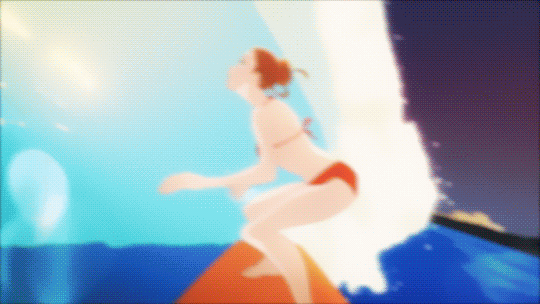
Last time we visited Masaaki Yuasa we checked out his early and kind of troubling Madhouse projects such Mind Game, his absurdly delightful Night Is Short, Walk on Girl, and various shorter projects such as my eternal fave Eizouken, and the showcase of international sakuga that was Ping Pong.
Well, it’s been a good sixteen weeks, and while we’re certainly not out of new material by any means, he seems like a good bet for something creative, weird, and charming. In this case, our two main features are two water-themed films from his days at Science Saru (now ending!): Lu Over The Wall (2017) and Ride Your Wave (2019).
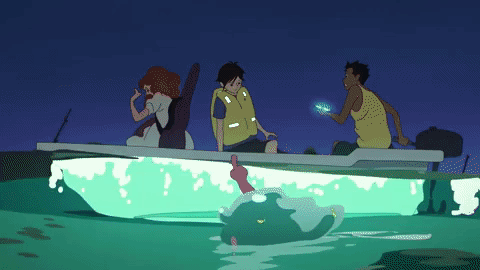
These films seem to have a few themes in common: boats, gorgeous water animation, a central het romance.
Lu is a mermaid ningyo romance story, with some beats you might recognise from other stories like The Little Mermaid or even Ponyo, but with something of a more modern attitude (the mermaid, who can gain legs through the power of music, goes viral on social media), and there’s a whole mermaid persecution subplot? In any case, it’s described as being beautiful but a little hard to follow, which suits me perfectly :p
Ride Your Wave dares to ask “what if your hot firefighter boyfriend became an underwater ghost”, a pressing question with which we all struggle at some point in our lives. The MC, Hinako, discovers that said boyfriend shows up in water when she plays a certain song. It’s about, you know, coming to terms with grief and moving on.
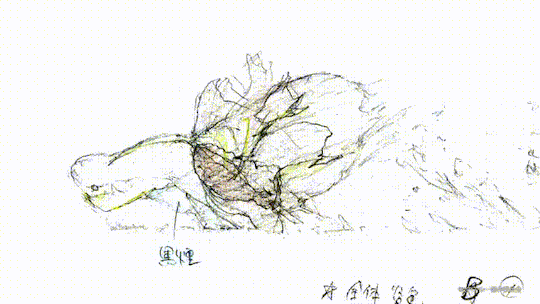
Of course it’s a Masaaki Yuasa production, so it’s also about god tier creative direction and visuals. Science Saru is known for having a much more diverse, international team than most anime studios, for giving a lot of young animators chances to jump up the ladder, and also for being ahead of the curve in using labour-saving tools like digital inbetweening.
As usual for any recent anime film, kVin of sakuga blog has a thorough review of Ride Your Wave; he has some interesting comments on the effects this digital approach has had visually, and for working conditions:
Rather than keep looking at it from Yuasa’s lens though, it feels more appropriate to end by discussing the film as the result of Science Saru’s efforts. Years ago, I admitted my worries about the studio embracing their non-standard Flash production pipeline because of the effects the vectorization of the animation had on the idiosyncratic artists who often work with Yuasa. Rather than try and hide the downsides, this is something the director himself has been pretty open in talking about, even as it has cost him some working relationships. Was it worth it then?
Despite my initial fears, the answer I’d give you right now is absolutely yes. Artistically things haven’t always worked out the best, leading to some unnervingly clinical results here and there, but they’ve gradually mastered this method to the point of it becoming a non-issue with movies like this; Ride Your Wave being Yuasa’s most standard offering to boot meant that he didn’t even try to rely with on his most unique acquaintances in the first place, and the mastery of the tech has gotten rid of the unnaturally even movement that plagued acting scenes in some prior Science Saru efforts. While you’d still be able to tell it’s a Flash-based production very quick, that’s mostly due to harmless quirks of the tools — Yuasa’s having so much fun with extreme zooming in and out of scenes, now that scenes like that are feasible for his team, that there’s no way he’ll quit.
Above everything else though, there’s the matter of efficiency. That’s a scary term to hear about in regards to working conditions, since it’s one of the excuses that executives love to use to explain why exploiting their workers is the way forward, but in this case it’s a much more humane matter. By embracing this path and gradually improving their usage of Flash for over 5 years (before Science Saru was even founded) they’ve managed to establish a tremendously efficient pipeline that allows their small team to produce a large number of titles. All of them polished productions, and yet allowing their staff to lead healthier work lives without obscene overwork; obviously it’s no panacea as everything their small crew can’t handle themselves still gets processed through the rest of the industry’s rotten bowels, but it’s undeniably positive for Yuasa and Eunyoung Choi‘s team.
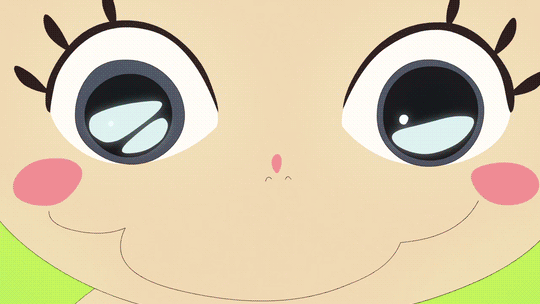
Naturally it doesn’t look exactly like your old-school 80s anime, but I personally find a huge amount of appeal in Science Saru’s style - they really seem to have found the way to get the best out of their pipeline. The peril of digital inbetweening is that your animation loses character, and that the too-smooth morphs can dissolve the general sense of 3D solidity that you get from manually inbetweening. But the way they’ve learned to use it - presumably with a lot of careful fine-tuning lol - is perfect for Yuasa’s bouncy flexible style.
Meanwhile, for Lu, they have translated a couple of interviews with the director himself - part 1, part 2. Yuasa highlights the work of character designer Yoko Nemu:
This adolescent tale is told through a cast of characters who are cute in a way that’s a little unexpected for a Yuasa work.
Yuasa: It’s true that up until now, my works didn’t have an art style that followed popular trends (laughs). In fact, I often get comments that say, “it was hard to look at.” This being the case, and wanting to challenge myself as much as I could, I asked Yoko Nemu, whose work has a shojo manga feel to it, to do the original designs. We had considered other possible artists, but I think she’s the only one who could have brought this movie’s sense of world to life.
What would you say the appeal of Nemu’s art style is?
Yuasa: It’s simple and not overly detailed, but you can still feel a sense of realism in its construction. She’s never short on ideas as well. She’s actually the one who designed Lu’s clothes made out of kelp, and I never would have thought to make it so that fish are swimming inside Lu’s head. On the animation side, it was a lot of work to have those fish constantly moving, but we ended up with a fresh new take on the mermaid.
He also discusses influences on the setting, and a little context for his interpretation as themes - it’s a fairly light touch interview but it adds some nice detail to the production.
So those are our main features! The others are the remaining Yuasa projects I couldn’t give a taste of last time. One I discussed last time, but didn’t get a chance to show, is his hardcore Netflix-funded series Devilman Crybaby (2018), which is essentially a tale of apocalypse, but taking many turns along the way: nightclub orgy turned supernatural massacre one episode, devilishly augmented running race in another, with a throughline of a small group of teenagers including rappers and fashion models who are variously caught up in the Biblical mayhem.

The central character, Akira Fudo, is a soft-hearted boy who is drawn into the orbit of his mysterious, loaded cousin Ryu, and through his machinations gets the power to become a ‘Devilman’, retaining more control over his transformed faculties than most of the human-possessing devils invading Earth. Of course, Ryu is not exactly up to good here, and the increasing devil manifestations are causing untold social chaos and prejudice.
Crybaby is apparently a more faithful adaptation of the original Devilman manga, and despite the plot being kinda wobbly at times, the imagery never stops hitting really hard - especially in the harrowing ending episodes. If you’re ok with the content (and it is a lot), it’s definitely proof that Yuasa still has that properly creative avant-garde side going.
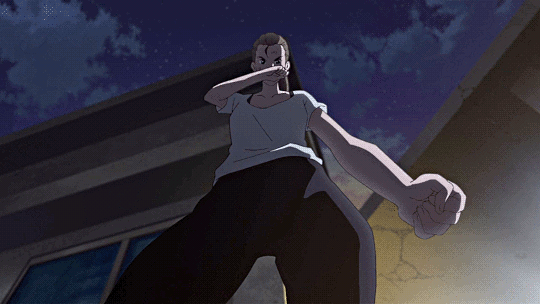
The other one I want to show was hot off the anime presses last time around: Japan Sinks: 2020 (you can guess what year :p), continuing the disaster theme by adapting a 1973 novel. Here, an earthquake precipitates an ongoing crisis as the Japanese archipelago sinks into the ocean. Not because of climate change (much faster!), but you can probably guess what inspired adaptation of a novel with that premise.
I have yet to watch Japan Sinks, but a quick look through the episode summaries suggests this one doesn’t hold back much either in terms of disaster imagery (think corpses falling out of helicopters and main characters dying to land mines). Japan Sinks has the weird quality of unexpectedly becoming an alternate history during its production - obviously the underwater-sinking disaster is fictional, but in fact so are the 2020 Tokyo Olympics, which were cancelled because, you know, COVID.
Obviously not everyone will find heavier things like Devilman Crybaby and Japan Sinks as appealing as I do (>_< total chuuni edgelord i know), so I’m going to make pretty clear when that block begins and ends!
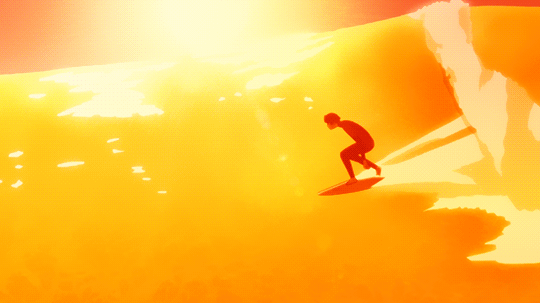
So! Let’s go back and watch one of my fave directors for another night ^_^
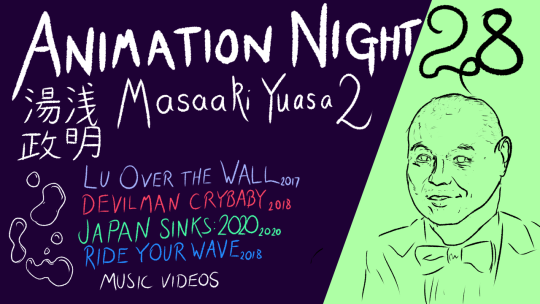
Comments